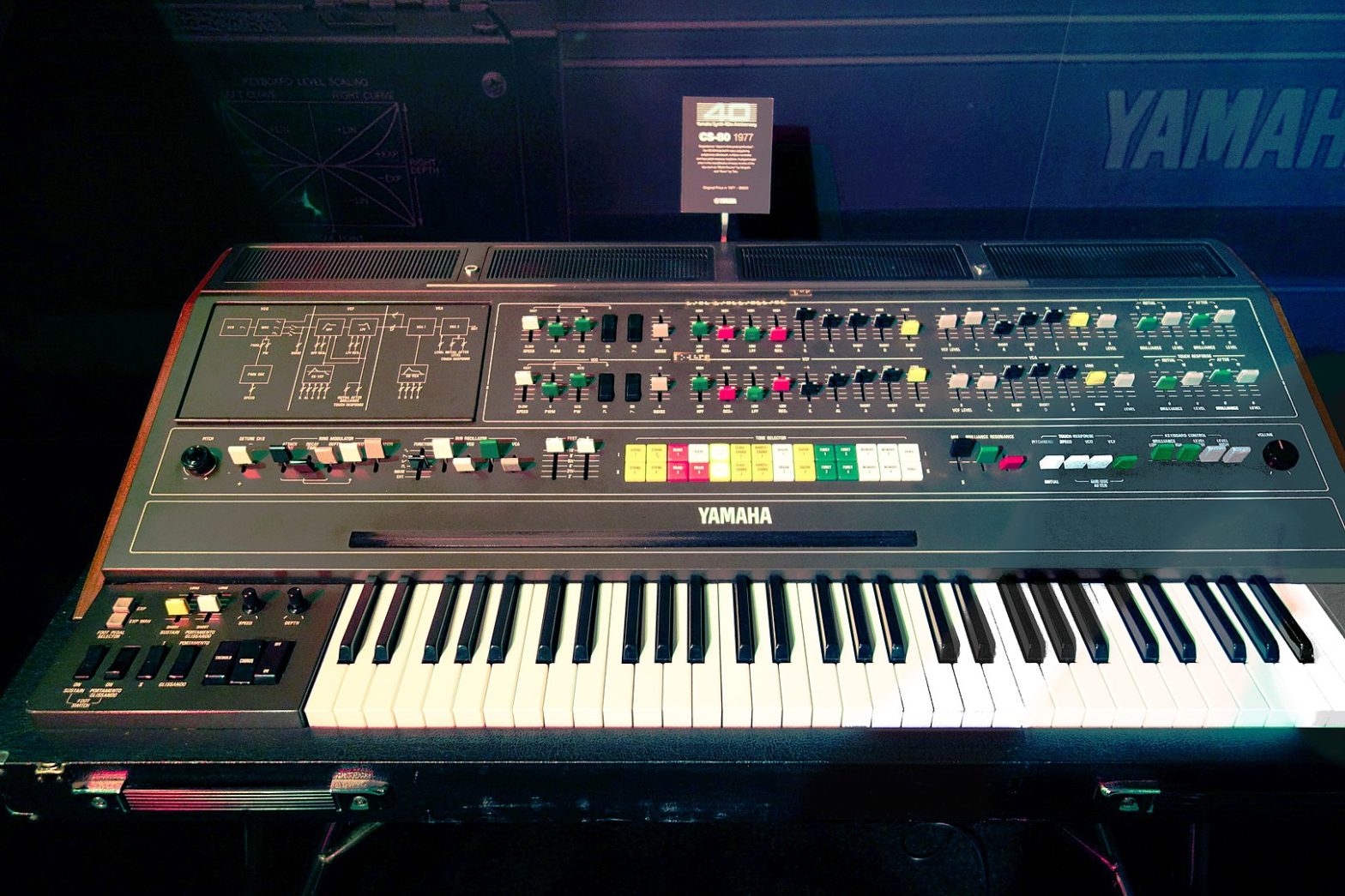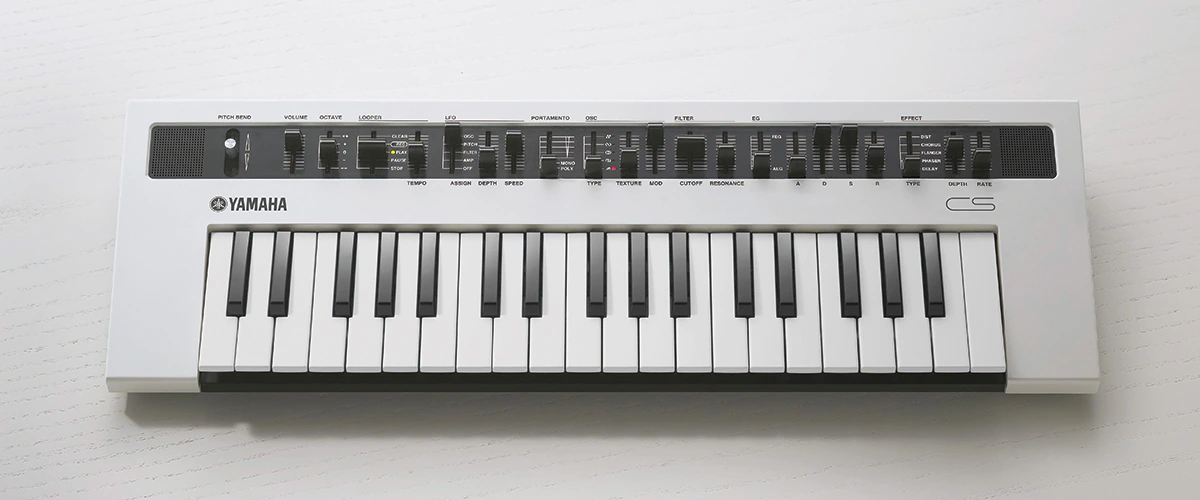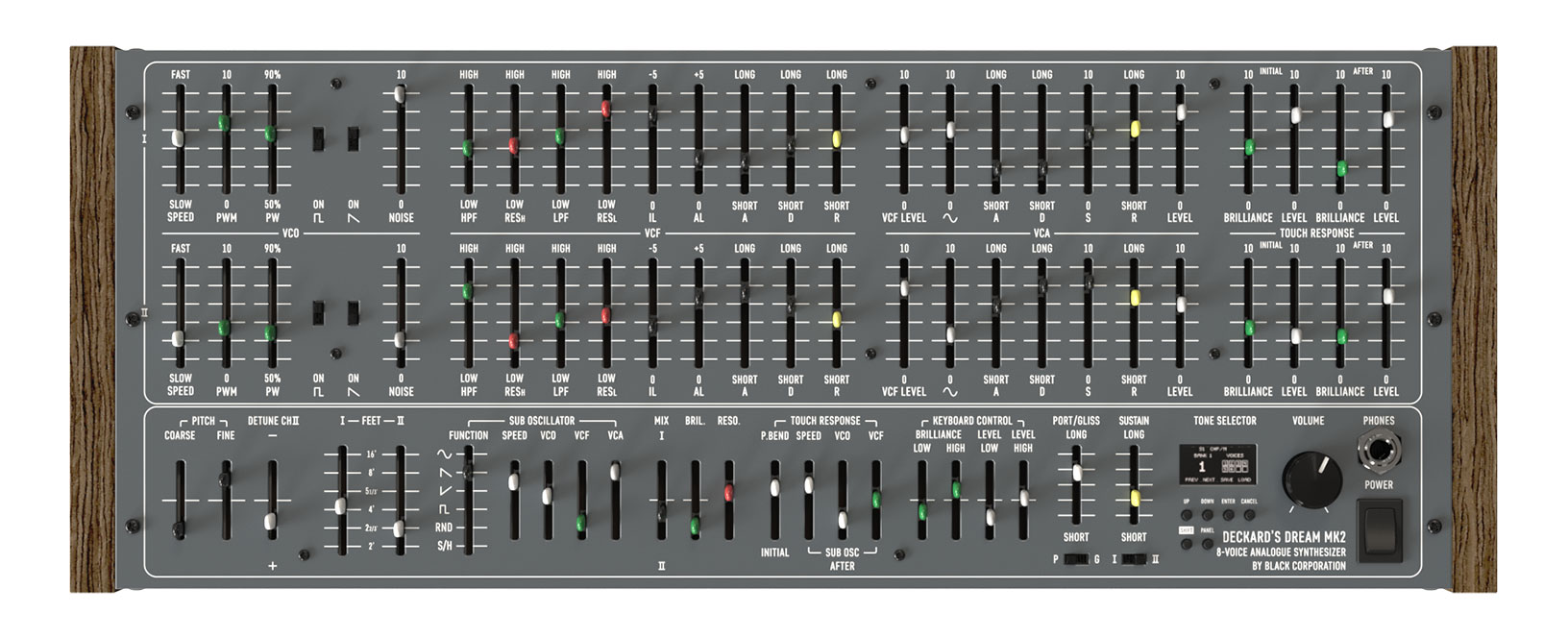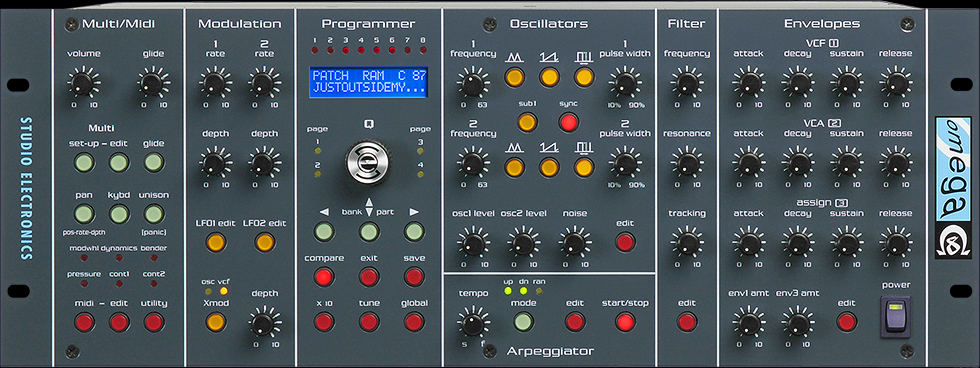Opulent Analog Synthesis
Originally released in 1977, the Yamaha CS-80 remains one of the most sought after and desirable analog synthesizers of all time. Featuring 8 voices of polyphony, the CS-80 has a distinctive sound, with a “fat” and “punchy” bass, and a distinctive “honky” sound in the high end. Capable of amazing analog strings, brass, drones and pads that are soaked in vintage analog goodness, the CS-80 remains an absolute classic over 40 years after its initial release.
The Yamaha CS-80 has been used on countless classic recordings by everyone from Vangelis to Daft Punk, Aphex Twin, Hans Zimmer, Jean Michel Jarre, Stevie Wonder, Michael Jackson, Vince Clarke, Depeche Mode, Peter Gabriel, Mac Demarco and many many more.
An Original Yamaha CS-80
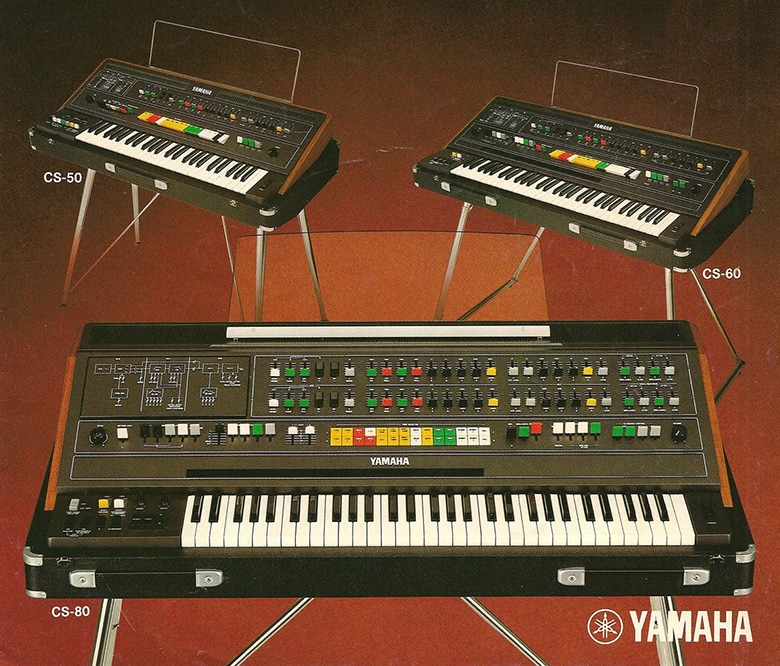
When it was initially released, the CS-80 cost a hefty $6900…and that’s still a pretty penny. On sites like Reverb.com and eBay, a used Yamaha CS-80 sells for anywhere from $30,000 and up to $100,000. To say that the CS-80 is expensive would be an absolute understatement. Add to that the fact that the synth weighs over 200 lbs, even shipping costs for the original unit must be huge (current eBay listings suggest around $300 shipping on average).
Owning one of these classic polyphonic synths is practically impossible for even hardcore synth enthusiasts but luckily there are many alternatives available in the form of keyboards, desktop synths, and VST/AUs capable of achieving comparable tones.
CS-80 Reproductions
Yamaha CS Reface
Yamaha themselves have invoked the coveted ‘CS’ branding with the release of the Yamaha CS Reface. While not a 1:1 reissue of the CS-80, it will get you in the ballpark at a fraction of the price. There’s a big difference between $300 and $30,000.
Its five analog-like oscillators provide a broad range of sounds from gritty analog distortion to smooth digital unison. Modulate each oscillator with filters, LFOs and envelopes for stunning sonic effects. Record your musical ideas using the onboard Looper.
The rear panel offers 1/4-inch jacks for mono and stereo output, USB connectivity for use as a controller as well as MIDI In and Out connectivity for controlling external MIDI devices or integrating the CS into a MIDI setup. An included 9V power supply is required for operation.
Black Corporation – Deckard’s Dream
Black Corporation have released a Desktop Synthesizer which is perhaps the closest equivalent to a CS-80 that can be purchased today. While it won’t cost you as much as a vintage unit, it’s not cheap–the Deckard’s Dream retails for $3749. Its name of course references the iconic Blade Runner score composed by Vangelis using the CS-80.
Much like the CS-80, Deckard’s dream features 8 voices of polyphony, each composed of two layers.
Layer One is a fully realized 100% analog voice for those who crave that classic analog flavor. From the weighty analog lowpass filter with its self-resonance capabilities, to the wide range of modulation and time-based effects, Layer One brings a massive amount of analog sound design potential right into your studio or live rig.
Layer One features eight voices of 100% analog synthesis, each with two separate but identical layers consisting of an analog voltage controlled oscillator with a discrete analog sub-oscillator, analog lowpass filter, voltage controlled amplifier with an analog overdrive circuit, multiple modulation sources, an analog effects section with analog delay, analog chorus/flanger and analog tremolo, and an analog reverb with a pre-delay and diffusion control. Layer One also features an arpeggiator, step sequencer, and MIDI-syncable LFOs.
Layer Two borrows the eight-voice, eight-channel architecture from Layer One and expands on it by including an additional eight-voice paraphonic layer that consists of a 100% analog voltage controlled oscillator with a discrete analog sine wave sub-oscillator, and a 100% analog lowpass filter. The paraphonic layer also includes its own unique filter envelope, DCA (Digitally Controlled Amplifier), and VCA envelope generators. Both layers can be played simultaneously and have their own unique output sections and level controls.
Studio Electronics Omega-8
While not modeled directly on the CS-80, the Studio Electronics Code 8 & Omega 8 are seriously capable of achieving CS-80 tones because of their analog circuitry, 8-voice polyphony and diversity of knobs and sliders.
The Studio Electronics CODE Omega 8 is an 8-voice polyphonic analog Desktop Synthesizer. The Code 8 has all the features that one would expect from a synth like this, including a wide range of oscillators and filters. The filter section is based on an analog ladder design and it can be tweaked in various ways to get different sounds. The oscillators have been tuned for maximum authenticity and they can produce sawtooth waves, square waves, triangle waves and sine waves.
The Studio Electronics CODE is a unique semi-modular synth that allows you to choose from several other classic filters as well through their series of aftermarket filter cards, including the Roland TB-303, ARP 2600 and of course the Yamaha CS-80.
Yamaha Montage 8/ModX
Yamaha’s Motion Control Synthesis Engine is the brains behind the Yamaha Montage 8. Its sound is derived from two Yamaha-specific engines: FM-X (a modern take on the Frequency Modulation Synthesis that put Yamaha on the map in the 80s with synths like the DX-7) and AWM2 (a form of subtractive synthesis first introduced in 1987 with the Yamaha SY-77). The ModX is a more affordable 88-key synthesizer which utilizes the same technology.
The Yamaha Montage and ModX are extremely versatile tools which were not designed specifically to mimic the CS-80. However, Yamaha has released a series of very convincing CS-80 performance patches which can be used with their Montage line. These patches will allow you to recall all of the legendary sounds of the CS-80.
Studio Electronics Boomstar SE-80
Another Desktop Synthesizer offering from Studio Electronics, the Boomstar SE-80 boasts spot-on emulation of the legendary CS-80 lowpass-filter. It is not simply a CS-80 reproduction or knock-off, but a way to get in the sonic ballpark of the SE-80 with a totally different type of device. Its name is evocative of the CS-80 for a reason.
Not only does the Boomstar SE80 come complete with two analog, analog syncable VCOs, it also provides you with a low-frequency Sine Oscillator (sub oscillator) and an analog-sync Oscillator. So what does this mean to you? It means you’ll have plenty of tonal options to choose from to create the perfect sound.
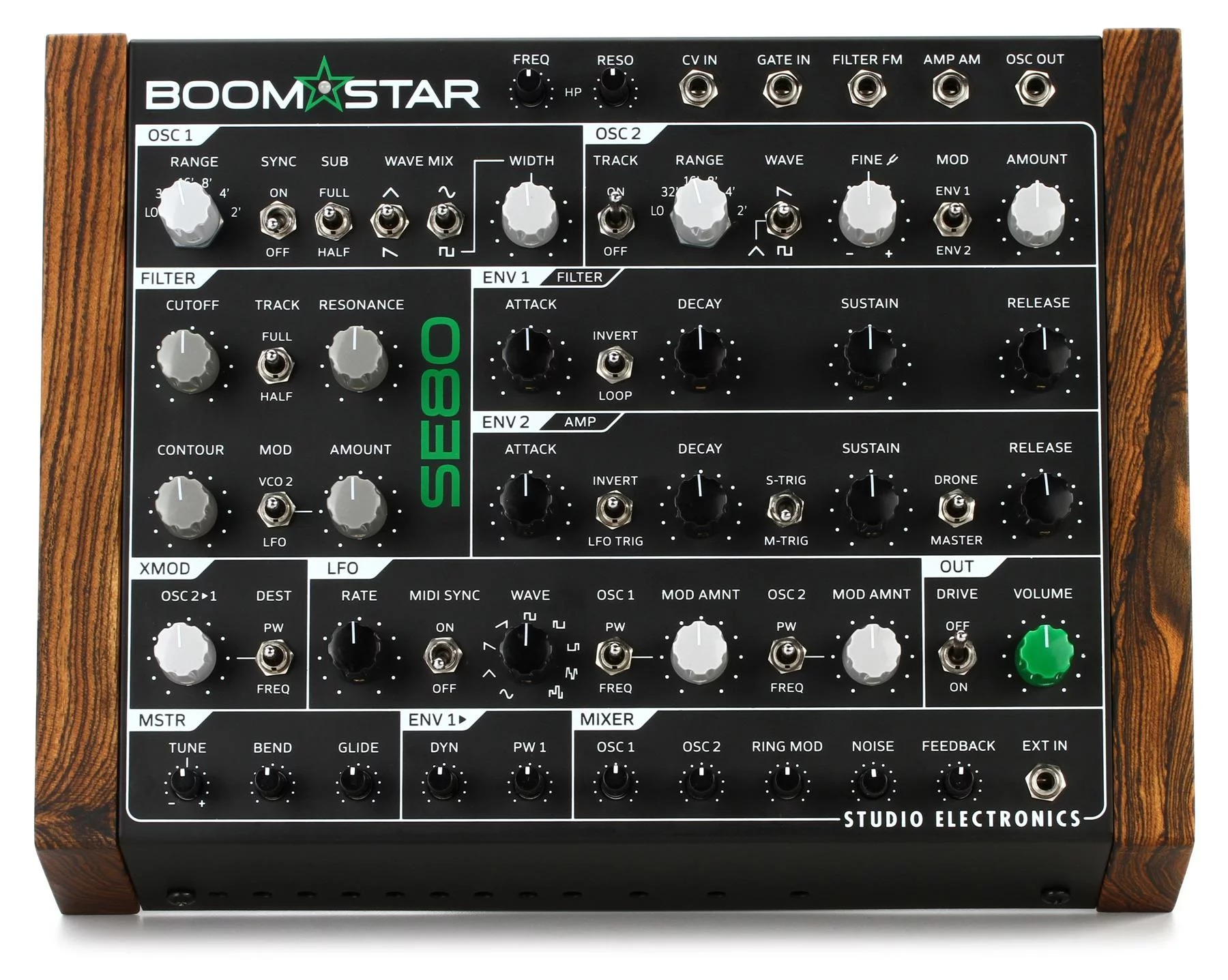
Yamaha CS-50 & CS-60
If you’re looking for the CS-80 sound but can’t afford its outrageous price tag, you may want to look into its younger brothers, the CS-50 and CS-60. While not as feature-rich as the CS-80, their components are based on the same architecture and the sound is undeniably related to the distinctive CS-80 tone. The CS-50 was released in 1977, just before the CS-50 and CS-60.
The CS-50 is a four-voice polyphonic synth as opposed to the 8-voice polyphony of the CS-60 and CS-80. It has one oscillator, a high-pass filter, a low-pass filter, sine wave, VCA, and much more. It’s heavy as heck too, weighing in at 100 lbs. Still, that’s less than half of what a CS-80 weighs. While cheaper than the CS-80, the CS-50 is still a rarity in itself. It can be purchased for about $10,000 on the used market.
The CS-60 was manufactured as a more budget friendly and light version of the CS-80. It’s also light on features, famously lacking the coveted polyphonic aftertouch of the CS-80. The CS-60 has 12 preset sounds and just one user patch for saving your own custom sound. On today’s used market, the CS-60 runs for around $15,000.
Yamaha CS-1x
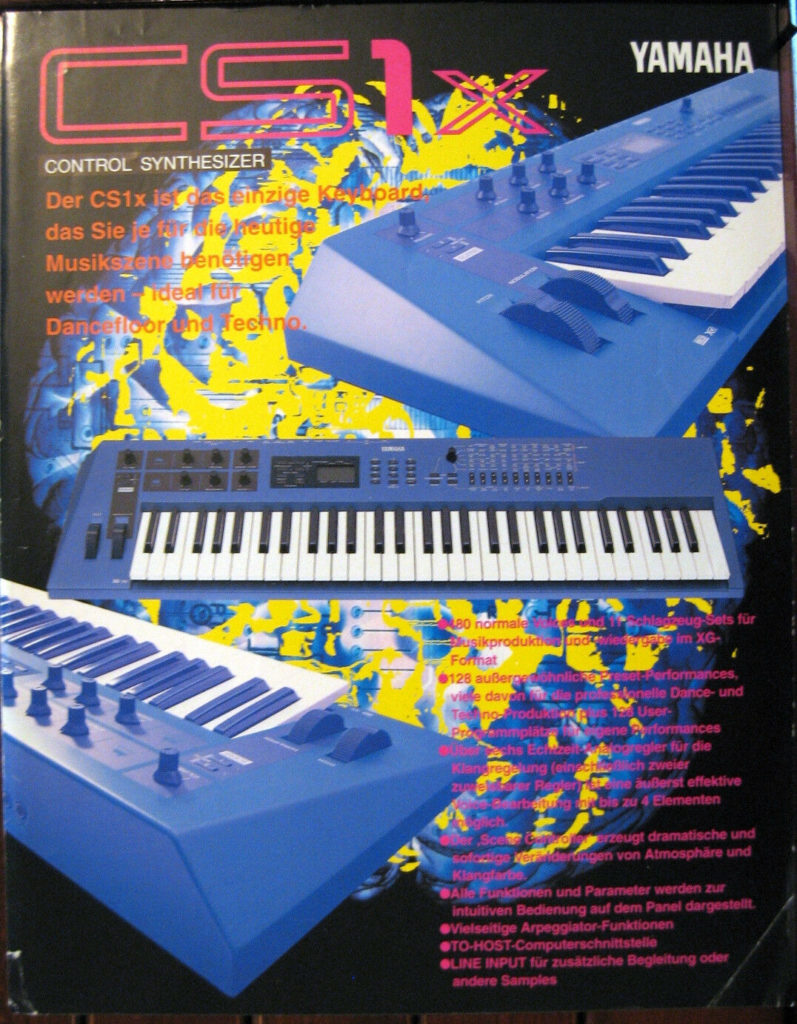
The CS-1x was released in 1996 and was Yamaha’s attempt to revitalize the ‘CS’ branding using a sample based synthesizer. The CS-1x is unique in that it’s a digital synth which promises ‘Analog Emulation.’ The voice generators used in CS1x are not conventional PCM oscillators, but rather formant-based synths and analog modeled filters. The CS1x is much more than just an Analog modeling synth though, as it also includes Yamaha’s proven DSP sound processing capability. With two independent sound generators, each capable of 4 simultaneous voices, the CS1x is capable of some massive sounds. The two sound generators are identical: each uses 2 Oscillators, an LFO and a Sub Oscillator, a 24 dB/octave Filter, a 2-pole, 4-pole, or 6-pole Filter, an Envelope Generator, and an Amp Envelope.
And even though it may seem technologically antiquated by today’s standards, it actually still packs a major punch, even in emulating classic CS-80 tones.
The CS-1x is capable of extremely vibey, rich, textured tones and is an underrated tool for those wanting to create ambient sounds.
The keyboard is a full-sized 61 key synth, velocity and pressure sensitive. As a digitally modeled and simulated analog keyboard, the CS1x has 2 Synthesis Engines, each engine has its own voice generating features. Engine 1 covers harmonic E-pianos, mallets, strings, brass, woodwind, and so on. Engine 2 covers acoustic/electric pianos, electric organs/clavinets and stage electric pianos.
If a particular sound is selected in Engine 1, the 8-voice keyboard will sound up to 8-parts. But, if an acoustic piano sound is selected in Engine 2 and you play chords, it will sound 4-parts.There are an impressive 19 modulation sources that can be routed anywhere to nearly any parameter, creating the analog sound that you want.
Alesis Andromeda
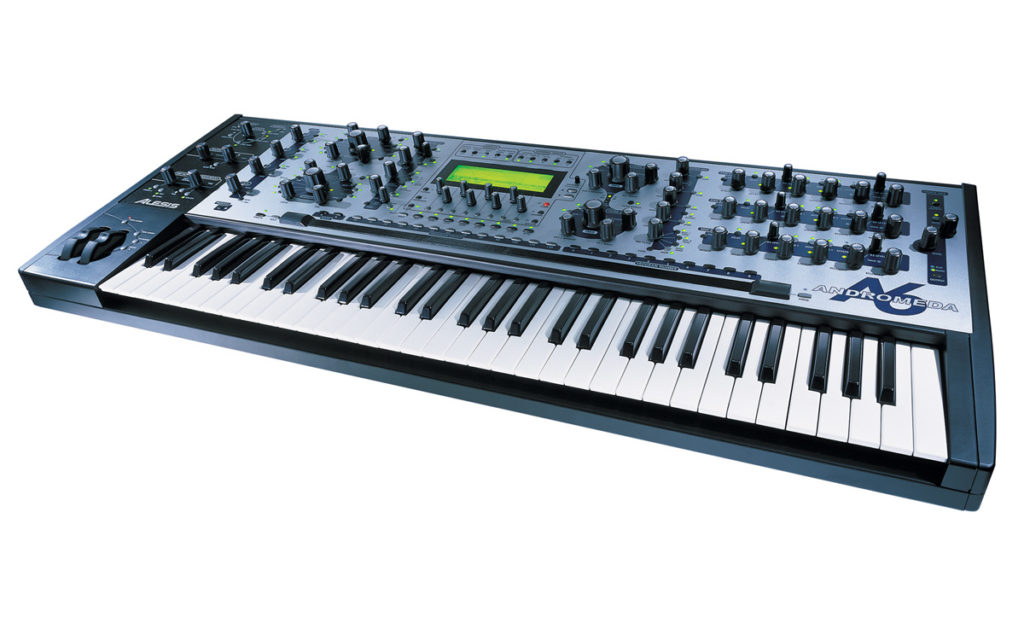
The Alesis Andromeda is a rare, coveted and classic synth in its own right. With its wealth of features and rich analog tone, it is one of the only synths in history that can come close to achieving the distinctive sounds of the CS-80. Upon its initial release in 2000, Alesis called the Andromeda the “ultimate polyphonic analog synth,” and that is no exaggeration. The Andromeda is an incredible piece of machinery.
Part of the reason why the Andromeda can achieve CS-80 tones is that the sine wave is available in the post filter mixer, a unique feature of the CS-80 which contributes to its rich harmonic output. And according to www.analoguediehard.com, “The VCFs chosen were the Moog ladder filter and the Oberheim multimode SVF from the SEM heritage, both widely acknowledged to be the most useful filters ever designed without much redundancy in timbre and they co-existed very well in a mix.”
The Andromeda is a 16-voice polyphonic analog synthesizer. It has 2 oscillators per voice, with the ability to stack the oscillators for more timbral possibilities. It has a sub-oscillator, ring modulator, noise generator, and filters. It is capable of 32-note polyphony when stacked, and features an arpeggiator and effects section. It was well received by the synth community, and was used by many artists such as Nine Inch Nails, Depeche Mode, and The Killers.
Today, the Andromeda sells on the used market for about $5,000.
Behringer DS-80?
The internet has been abuzz for several years now with rumors of an affordable Behringer clone of the CS-80. Behringer themselves have dropped hints about its progress but we are still far off from any kind of official release date.
According to Behringer, British analog guru John Price and his team are now “working on the power section to make sure we replicate the same heat and power characteristics of the original synth.”
The company says that the DS-80 will be the most fully featured CS-80 clone ever made and, in addition to its authentic voice board, will feature an arpeggiator, an advanced modulation section, a 256-step sequencer, an effects section and more. A release date hasn’t been announced, but Behringer says that the DS-80 will be “worth the wait”.
Software Emulations (VST/AU)
Arturia CS-80V
Arturia’s CS-80V is a classic in its own right. It’s a perfect emulation of Yamaha’s CS-80 (which was used by Vangelis, Tangerine Dream and so many others). The CS-80V still has that thick, organic sound that made the original such an important instrument. The CS-80V’s sound is amazing – lush and deep, with massive thick and warm basses, thick and clear leads, and excellent sounding pianos and brasses.
The CS-80V is a VSTi and will run in most any VST compatible host, but the host needs to provide some control over the MIDI interface. For example the CS-80V won’t run in Reason. This is because it contains a MIDI interface that is not compatible with the Reason format. You can use the CS-80V in Reason if you have a host that has MIDI routing, such as Live.
The controls are identical to the CS-80, but they’re set up a bit differently. The original CS-80 had two voices, eight voices per section, with four sections. The CS-80V has four voices, two voices per section, with four sections. The original CS-80 had four sections: two for oscillators, one for amplitude, and one for filters. The CS-80V has four sections: two for oscillators, one for filters, and one for amplitude. The original CS-80 had two LFO’s, one for each section. The CS-80V has two LFO’s, one for the oscillators and one for the filters. The original CS-80 had two envelopes, one for each section. The CS-80V has two envelopes, one for the oscillators and one for the filters. The CS-80V also has an arpeggiator, which the original CS-80 didn’t have.
The CS-80V has four oscillators, two per section. The oscillators can be synced to each other, and they can be ring modulated. There are three waveforms: Sawtooth, Triangle, and Square. There are also three noise colors: White, Pink, and Blue. The noise colors can be used in place of the waveforms. The CS-80V also has a noise generator, which can be used in place of the oscillators. The noise generator has three noise colors: White, Pink, and Blue. The noise colors can be used in place of the waveforms. The CS-80V has two filters, one per section.
Arturia CS-80V at a glance:
- Faithful recreation of the Yamaha CS-80
- Virtual analog modeled filters
- Stereo audio engine
- Mono and poly modes, with portamento and legato
- Polyphonic ring modulation
- Effects include chorus, delay, EQ and more
- Automap Universal integration
- More than 500 presets
- Windows/Mac compatibility
- AU/RTAS/VST/Standalone compatible
Memorymoon ME-80
Giving Arturia a serious run for its money is the ME-80 from Memorymoon. While they offer an absolutely incredible emulation of the CS-80, the plugin is only Windows compliant and there is no Mac version as of today.
The Core of MemoryMoon’s ME80 is the simple idea of an analog-modeled polyphonic synthesizer. It’s an idea that has been pursued by a few companies over the years, with varying degrees of success. Most of MemoryMoon’s competitors have used a “brute force” approach, with dozens of different modules crammed into a single plug-in. This can be a great way to get a wide variety of sounds out of a single plug-in, but it often comes at the expense of quality.
MemoryMoon’s ME80 uses a “divide and conquer” approach: each of its modules is designed specifically for polyphony. This allows MemoryMoon to create a much higher-quality sound than its competitors, while still providing a wide range of sounds.
MemoryMoon’s ME80 comes with 250 presets, covering a wide range of sounds. From classic analog sounds to modern, digital soundscapes, MemoryMoon’s ME80 has you covered. The presets are organized into categories for easy browsing, and you can save your own presets for easy access later.
MemoryMoon ME-80 At A Glance:
- Analog-modeled polyphonic synthesizer
- Based on traditional subtractive synthesis
- Unique voice architecture for polyphony
- Up to 8 voices of polyphony
- 250 presets
- Windows only
IK Multimedia Syntronik
Syntronik is a bundle of virtual synthesizers including the V80, modeled after the Yamaha CS-80. The Syntronik V-80 also takes inspiration from the GX-1 and CS-01 synths. The CS-80’s voice architecture is a unique confluence of filtration, layering, and modulation which the Syntronik emulates immaculately. Each oscillator has its own high pass and low pass filter and even envelope controls. Its rich and organic sound is easily tweaked with the resonant high-pass filter which can give the V-80 a warbly, flowing quality.
Syntronik offers a huge collection of synths and audio processing. You can even blend and mesh different units in new and previously unheard of ways. The interface can get a bit overwhelming if you let it, but you always have the option of sticking only with the tried and true unit of your choosing.
In Conclusion
Today it’s easier than ever to get the classic sound of the Yamaha CS-80 at almost any budget. From low-priced VST plugins, budget-friendly reproductions, and hardware units heavily inspired by the original to pricey and now out-of-print equivalents, the legacy of the Yamaha CS-80 lives on!
